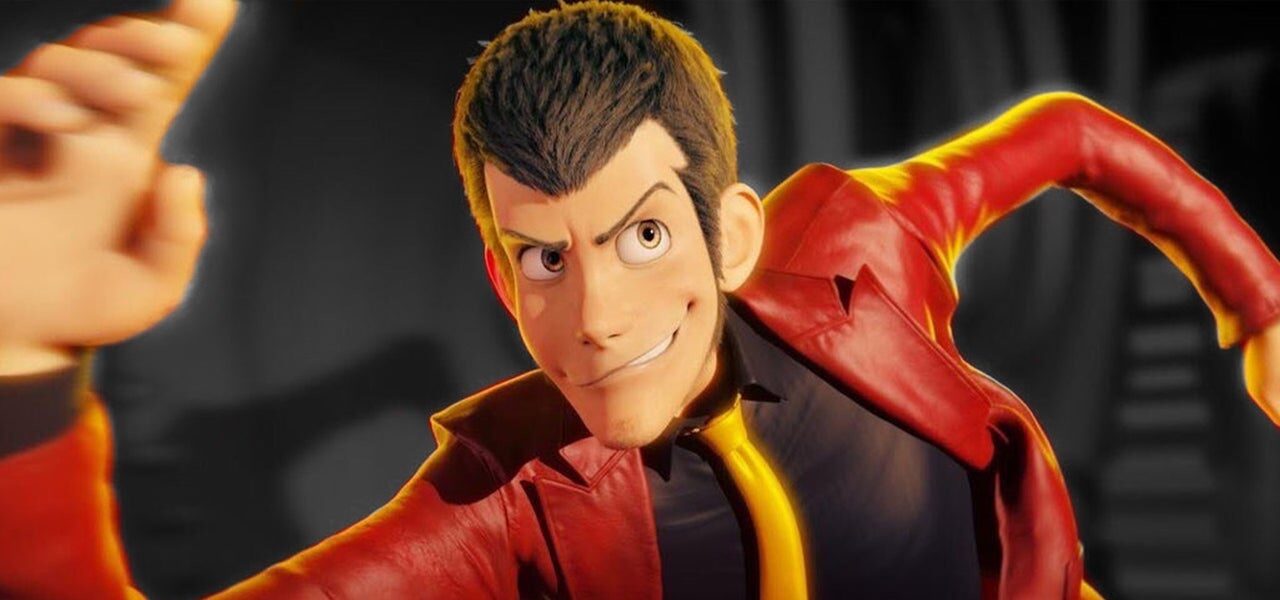
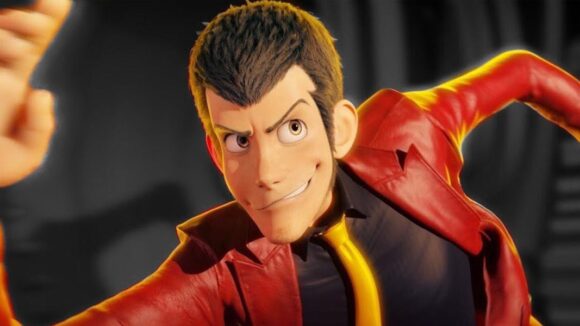
‘Lupin III: The First’ Interview: The Joys And Challenges Of Translating The Classic Franchise To CG
It’s been over 50 years since the character of Arsène Lupin III was first brought to life in animated form in Masaaki Osumi’s Lupin the Third: Pilot Film. Despite the iconic gentleman thief’s penchant for disguises and changeability, the franchise has managed to stay true to its core premise — Lupin steals things and occasionally does a good deed, pursued all the while by his nemesis Inspector Zenigata — while remaining distinctive within an ever-changing industry.
Created by the manga artist Kazuhiko Kato, a.k.a. Monkey Punch, in a series first published in the Japanese magazine Weekly Manga Action in 1967, the character has seen a number of iterations over the years. A pre-Studio Ghibli Isao Takahata and Hayao Miyazaki put their own spin on him through their oversight of parts of the original Lupin III animated series; Miyazaki later returned to the character with the feature film The Castle of Cagliostro.
The weirdo yakuza film director Seijun Suzuki (best known for live-action films Tokyo Drifter and Branded to Kill) had a turn as a director on Lupin III: Part II and its parallel feature film Legend of the Gold of Babylon. The character fully stepped into the 21st century with the 2018 series Lupin the Third Part 5, which began to color its heists with more modern musings on social media and digital surveillance.
Given all those variations and adaptations, it’s no surprise that Lupin’s first foray into the third dimension also works. His latest feature film outing, titled Lupin III: The First, is the franchise’s first use of cg animation. The film was animated at TMS Entertainment and Marza Animation Planet, and directed by Takashi Yamazaki (who is best known for Dragon Quest: Your Story, another cg update of a classic franchise).
Ahead of the film’s home release in the U.S. next week, the film’s animation supervisor Tomokazu Sakamoto and rigging supervisor Tatsuya Akagi spoke to Cartoon Brew about the challenges and freedoms of translating Lupin III from two dimensions to three.
Cartoon Brew: Lupin III: The First is the first 3d film in the Lupin franchise, but even in that translation from 2d to 3d it’s extremely faithful to the original designs of the characters. When did you ever feel entitled to move away from the style of Monkey Punch’s work?
Tomokazu Sakamoto, animation supervisor: As the series and Monkey Punch’s work has shown, there can be so many different kinds of Lupin, and that works fine. That helped encourage us to just go for it. Monkey Punch mentioned that when he came to Marza over ten years ago and looked at the cg Lupin’s pilot version, but all of us feel we probably don’t have the authority to completely deviate from that original style.
So of course there is a limitation to how much we keep the same in order to make a 3d cg film, but we wanted to respect those great animators of the [franchise’s] past, and make it actually look like the past Lupins.
Tatsuya Akagi, rigging supervisor: Before we were fully involved into the production, I actually went to talk to some of those legendary animators who worked on Lupin III before, just to ask for their advice or opinions, to confirm the nature of the character together and help to connect to those past works.
In the process of bringing these characters over to 3d, what were the most important things for you to focus on?
Sakamoto: The way the face is drawn, details like the edges of the eyes or eyebrows and whether they go up and or whether they go down, all of those details. Those are really the most important thing for the animator.
Akagi: So for the rigger, we’ve usually just got to listen to what the animators want. So whatever comes in for them, I’ve got to make it happen so that the animators can have a little bit of freedom to [create] a facial expression, and nail those details.
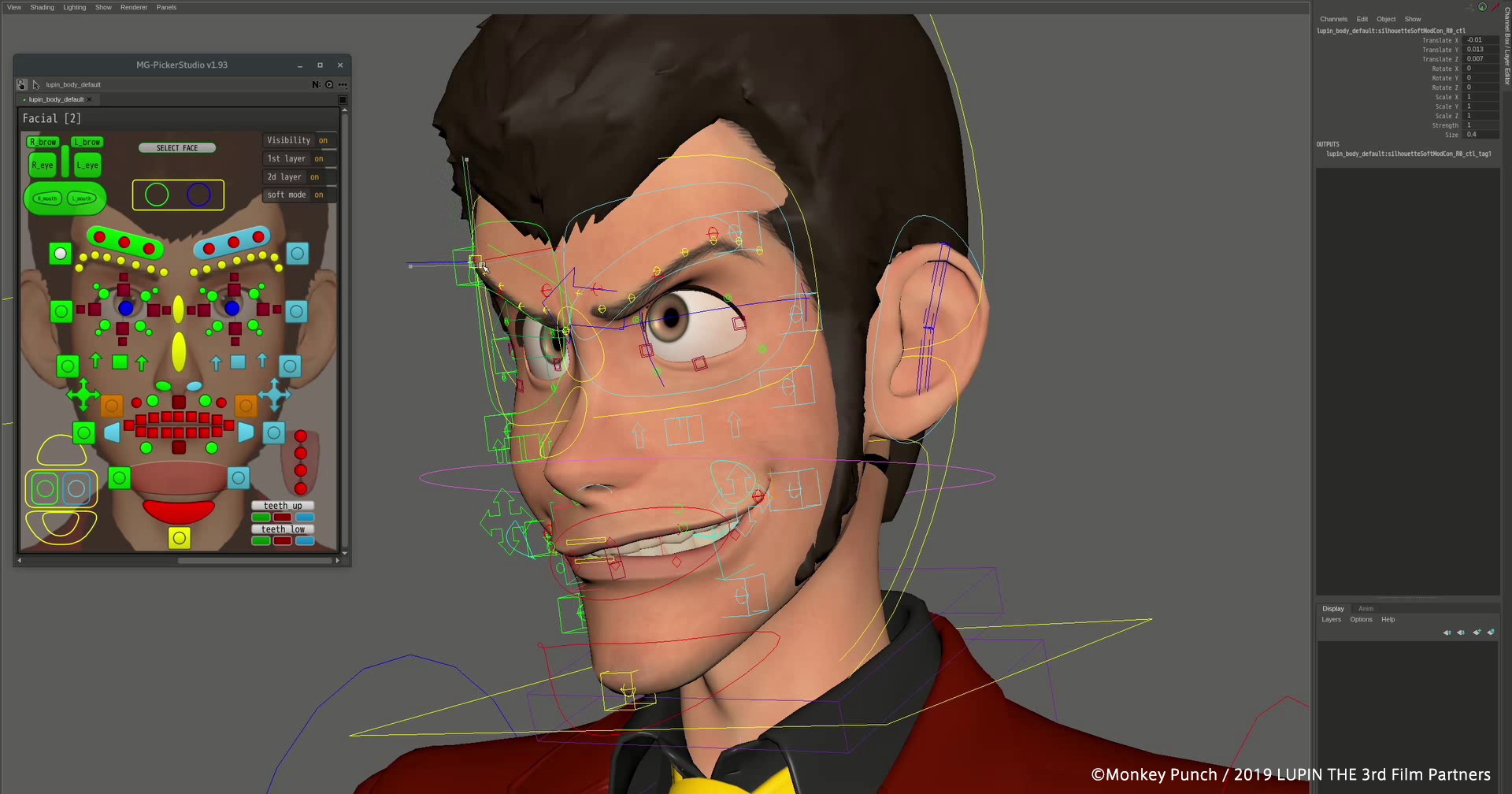
Sakamoto: So in order to get to that characteristic facial expression, for example, there’s so many controllers inside the face. That’s what the rigger is creating for the animator so that they can reach those extreme expressions.
Lupin has this monkey kind of look — I don’t know how to explain it, but he’s closer to the look of an animal. So we’re working with a controller that we don’t usually have for normal human characters because of how much he resembles a monkey. We had to create a special controller for that.
So a lot of getting the characters to move like their 2d counterparts was in those facial expressions and posing. What challenges were there in translating those to 3d?
Akagi: We [the riggers] created a special controller especially for Lupin, because he has a very unique facial structure. To reach that expression like that of a monkey, this part [gestures to top lip] comes a little bit more forward compared to most human beings. So with our controller, we can actually adjust facing to the camera. That distinctive Lupin look — the corners of the mouth, and the high-up arch of his eyebrows — it doesn’t look the same as most human beings.
Did you have a favorite character to work on?
Akagi: I worked on everything throughout the movie — of course, since I’m not an animator, my part is in all of the shots and sequences, but I also worked on the clothes and hair simulation. I really enjoyed working on the simulations for Goemon, but my favourite was Zenigata. He’s a very strong character in terms of his expressions. I tried to keep that in mind because [his] expression can’t be subtle or weaker; it’s consistently maintained.
Sakamoto: I feel I’m supposed to say Lupin because he’s a main character, but I liked Jigen the most — especially the Jigen of this movie, like he’s really cool. In the series he can sometimes just be this old dude, but this time he’s looking really handsome, so I enjoyed working on him the most.
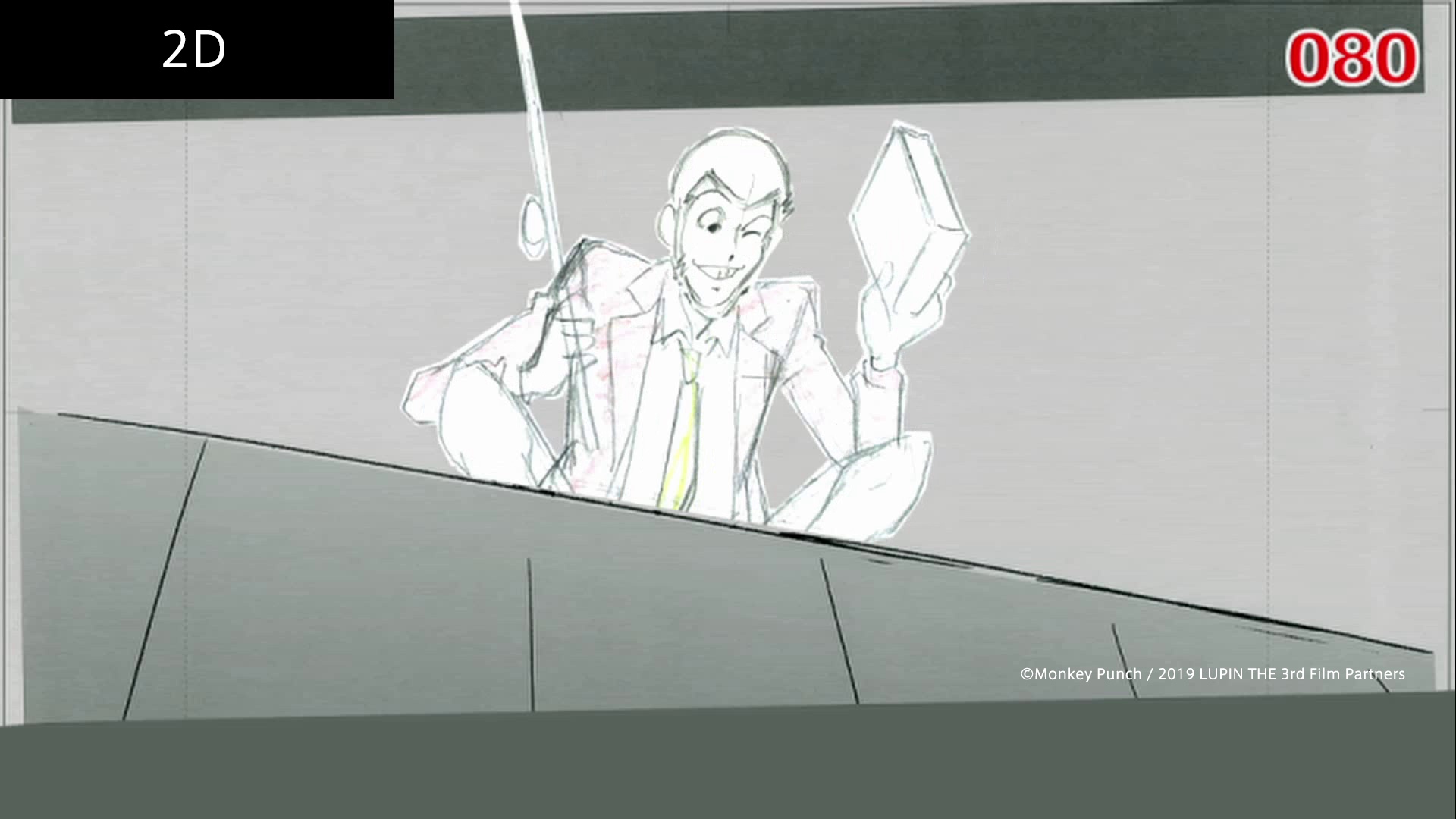
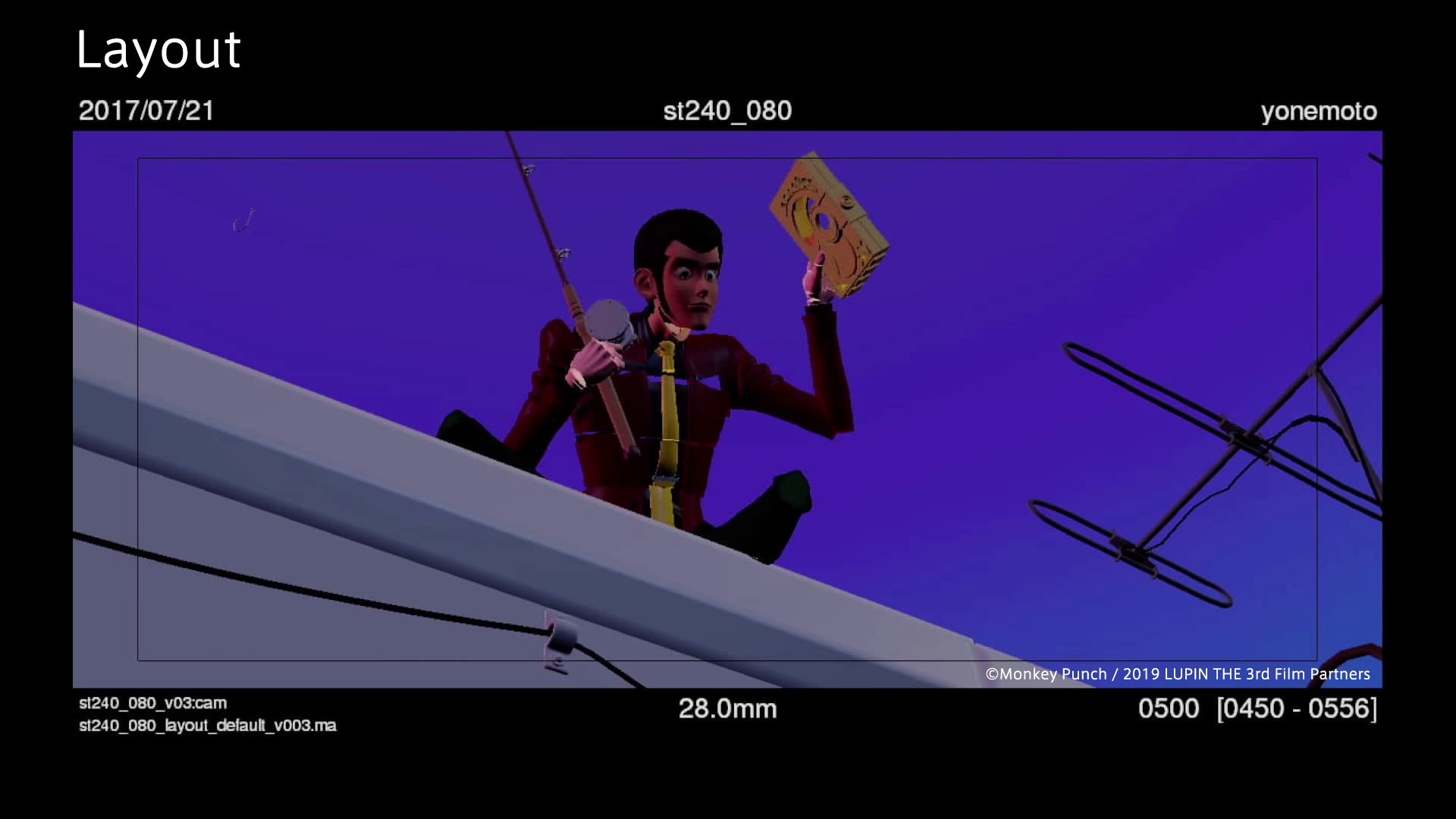
When the trailers first started coming out over here, a lot of people were commenting on how attractive Jigen looked this time around.
Sakamoto: That’s really funny [laughs], that’s awesome. Jigen’s main characteristic is the hat, so as long as there is a decent type of hat, everybody can recognize him. The other parts can be just be tweaked a little bit here and there. With respect to past animators, that’s how I thought about Jigen. There are probably people who are more conservative about changes from 2d to 3d; it’s a sensitive topic.
Was there anything that just didn’t translate to 3d?
Sakamoto: Looking back [to before and] through the production, we had to R&D quite a lot, because these are very special characters: they have very unique looks, unique movements. But it’s really difficult sometimes just looking at the original 2d drawings, because they’re so well drawn by the original animators — there are very precise lines, some thicker or thinner, sometimes darker or lighter, those kinds of sensitive lines. You couldn’t really express that within 3d.
How do you compensate for not being able to do that in 3d?
Sakamoto: We didn’t think we could just emulate those details with sensitive lines and all of that. However, we were able to express things like the texture on the jacket, for example, which you wouldn’t see in 2d. So it balances out.
There were a lot of visual and auditory references to past Lupins like The Castle of Cagliostro. What about those works did you want to carry over to your own?
Sakamoto: If you’ve seen the Lupins in those past works, each Lupin looks and moves slightly different depending on which series it is. So there wasn’t anything in particular other than facial expressions that we had to carry over. Those facial expressions and poses are the most important part; we didn’t really have to be particular about translating certain things from the past works.
That said, if there was a season that we were watching and focusing on to translate and carry things over, it’d be the fourth season [Lupin the 3rd Part IV: The Italian Adventure].

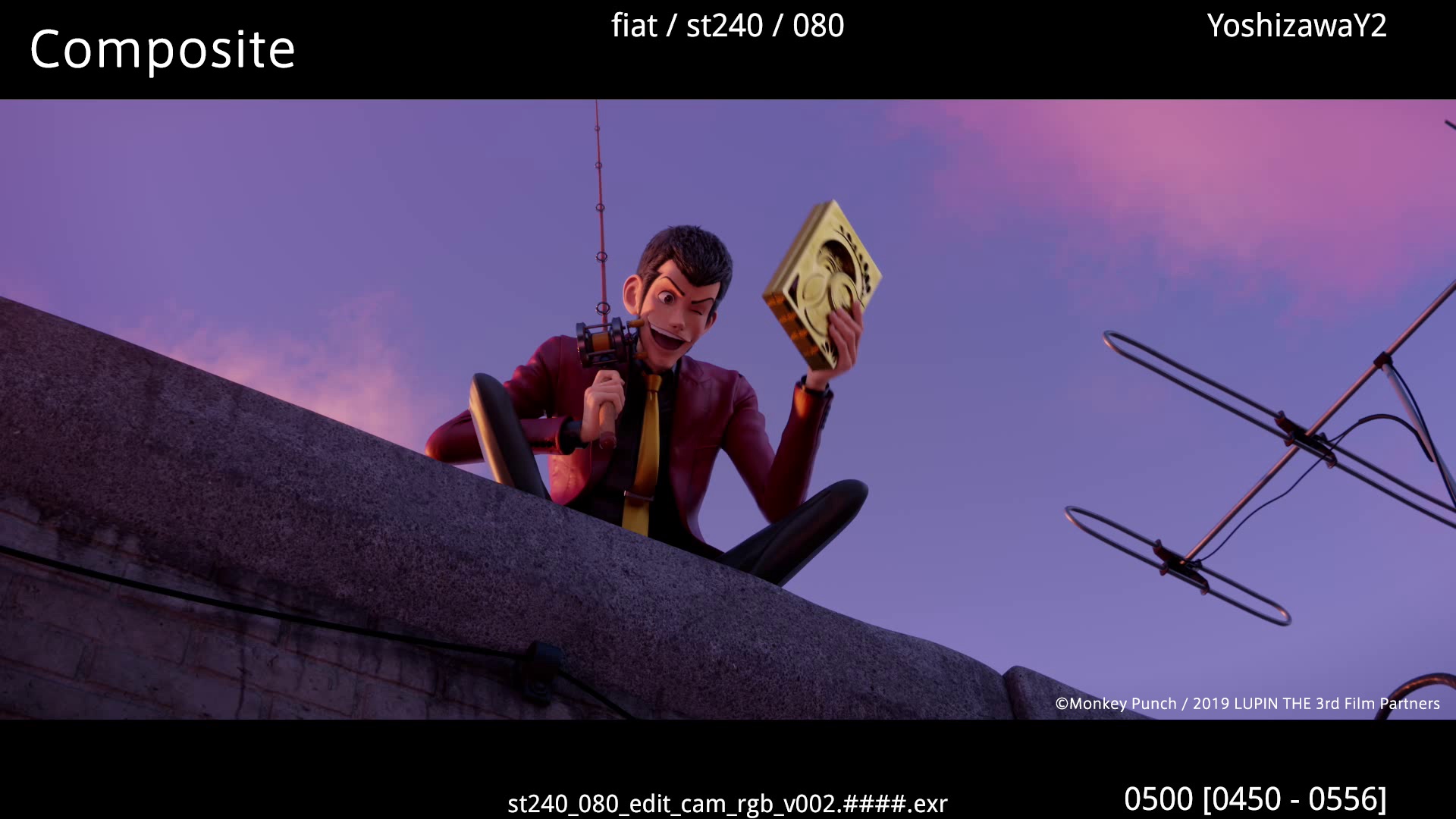
I did notice a few nods to Part IV in the film’s opening titles.
Sakamoto: Super cool-looking, that part [Part IV]. So Hisao Yokobori, an animator from [TMS subsidiary] Telecom Animation Film who worked on that intro for Part IV, his work got me really inspired. There’s so many homages to it in the intro for our film — if you’re a Lupin fan, you can recognize many things here and there. Since I was a supervisor for the animation team, I won’t always work on certain shots as I’ll be across everything, but for the intro I was really working on that.
I read that the director, Yamazaki-san, was particularly excited about the 3d medium’s potential for action. What for you is different and exciting about staging action in 3d, particularly for this franchise?
Sakamoto: The great parts that we can do within 3d, but not in 2d, would be the camerawork, because we can freely do things like move the camera 360 degrees. There’s wider angle and perspectives that we can use here that would typically be really hard to deal with in 2d, especially those movements. There are very powerful and dynamic movements that can be more directly expressed with 3d.
Considering that you’ve got this very realistic lighting and background work, how did you figure out the balance between that photorealism and those very cartoonish Lupin-esque movements?
Sakamoto: That’s a very difficult question. Maybe we didn’t think in that much detail when coming up with the final look. I suppose we knew that if we tried to proceed with a lot of realism in the movements, it would be no longer be the Lupin that everybody’s familiar with.
We usually work on the animation before we render those backgrounds, so there’s no lighting in it. So I don’t actually see all those detailed backgrounds when I’m working on the animation — we don’t really see how the final look is going to be [laughs].
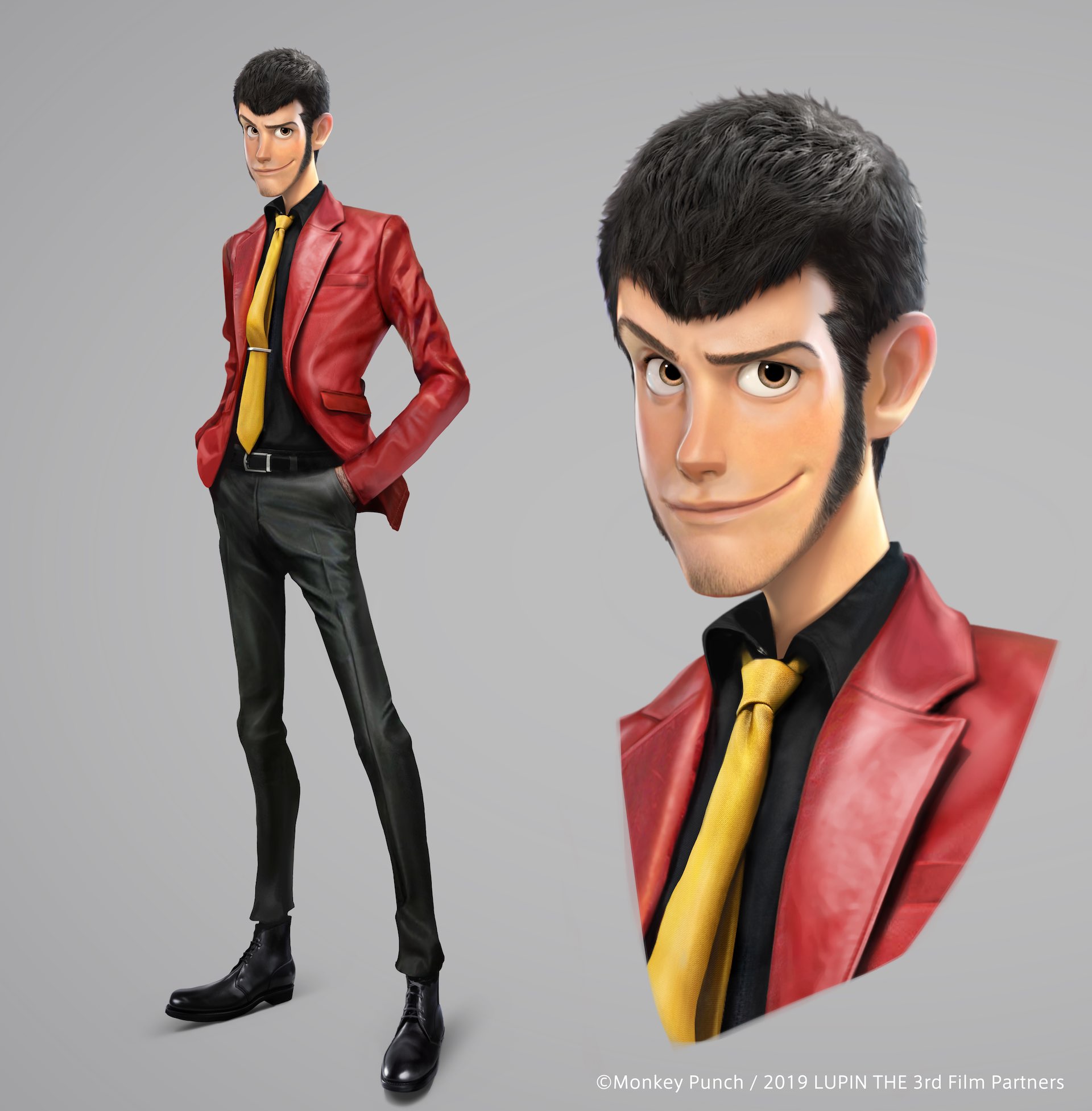
Lupin is a character who’s always kind of defied the rule of physics. Was it important to you that he remained in defiance of those rules?
Sakamoto: We had to ignore some physical principles in order to get Lupin’s look right. But there are some times where we still need to actually care about those principles in order to make that look work in terms of animation. So maybe like a Disney character: sometimes they move in a very cartoony way with these very extreme movements. We focused in on that for the Lupin-like movements and posing. [Laughs, mimes diving] That movement, the one where he can somehow take off all his clothes, any clothes, in a second. It’s sort of a miracle.
I read that Monkey Punch had given the film his blessing, saying that this Lupin will come with “new sensations.” What do you take “new sensations” to mean, and how do you think that the film conveys them?
Sakamoto: Perhaps compared to drawing, 3d is more precise in conveying reality when examined against past Lupins. So some people can probably feel as though these characters actually exist because of the 3d rendering, and simply because it’s the first time an audience has ever seen these characters this way.
That might sound like a bit of a cheap answer because there are so many 3d works in the world, especially in the last decade or so. It’s not like Lupin is a smaller character — he has a human body and its movements — but even with 3d his movement is very cartoony. So that combination can feel pretty new, even though there are a lot of works like that out there.
GKIDS is releasing “Lupin III: The First” on digital download-to-own on December 15. A Blu-ray and Steelbook will follow on January 12.

.png)